System can reduce nutrient loading in adjacent waters
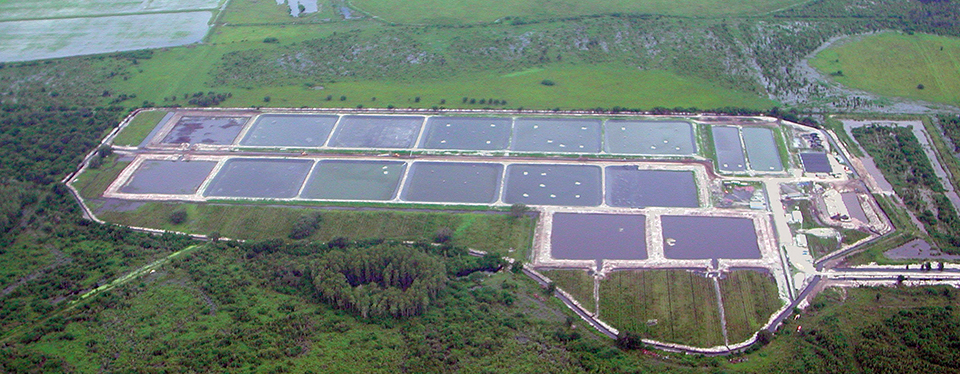
OceanBoy Farms (OBF) is developing an inland, freshwater, shrimp production system that includes a 1,500-square-meter, greenhouse-enclosed nursery with HDPE-lined raceways and outdoor ponds operated with limited or zero water discharge. Production protocols include nursery, grow-out, processing, and marketing aspects of the Pacific white shrimp (Litopenaeus vannamei). The first phase includes twelve 1-ha shrimp grow-out ponds, two 1-ha ponds for polyculture of fish and shrimp, two 0.5-ha ponds for finfish, one 2-ha pond for water treatment, a 2 million-liter tank field reservoir, and a state-of-the-art, value-added processing plant.
Site selection
OBF was developed on 75 ha (185 acres) just outside the town of LaBelle, in south-central Florida, USA, an agricultural community that has welcomed the new project with open arms and provided nearly every needed service for the project, from employees to insurance, concrete to pipes. According to Chief of Operations Robin Pearl: “We are located in a small, friendly town where we help each other, and we are within 2.5 hours of more than 7 million potential customers. What more could we ask for?”
Labor
The county suffers from the largest unemployment in Florida, due to citrus and sugar crop reductions. A hard-working migrant work force is readily available and services needed to support large agri-projects are only a phone call away.
Water quality
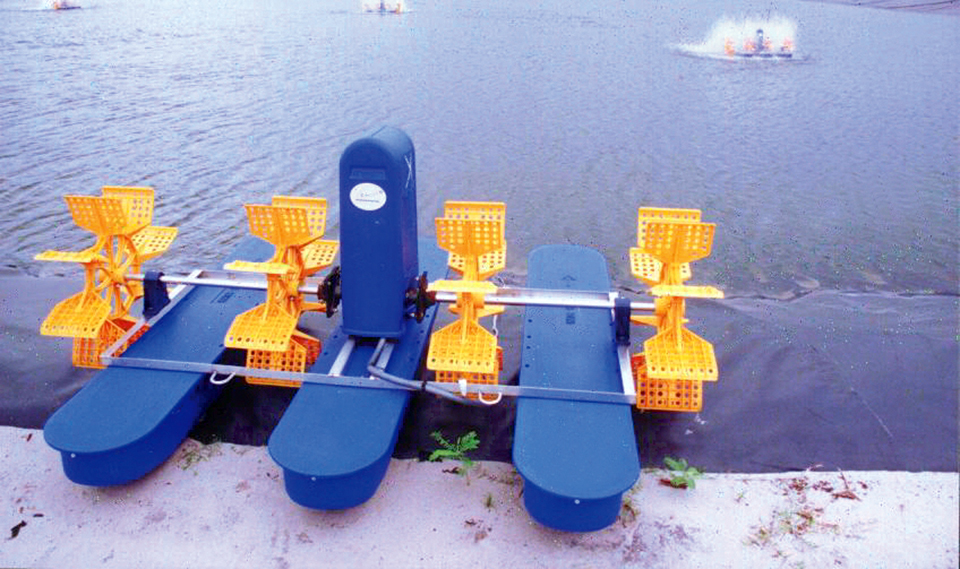
One of the primary components is availability of water with the proper quality. LaBelle and the surrounding communities are located above several different water tables with the proper water hardness and salinity necessary for inland culture of L. vannamei. The area’s remoteness provides for added control in establishing the biosecurity protocols needed.
Expanding horizons
Several pilot projects in the United States for the culture of L. vannamei in zero discharge recirculation and zero exchange inland fresh/brackish water systems are currently marching forward. Areas where shrimp culture would have once been considered impossible or even ridiculous are now proving to be practical candidates for shrimp culture. Areas such as the deserts of Arizona and Israel, the clay ponds of Alabama and Mississippi, raceways on the Atlantic coast and lined ponds halfway between the Gulf of Mexico and the Atlantic Ocean in South Florida. It is no longer unusual to find shrimp farms ~ 8 to 320 km (~ 5-200 miles) from the nearest ocean.
New opportunities, problems
With this move inland, new opportunities and new problems have arisen. Land costs near or on the coast of Florida made shrimp production financially impractical when compared to other regions. The environmental requirements in such densely populated regions made permitting and mitigation less than appealing, and exotic culture permitting next to impossible. Land may cost as much as U.S. $2.5 million per hectare (~ $1 million per acre) on the coast, but drop to ($1,500 per acre) ~ 48 km (30 miles) inland. Exotic species once banned from production in coastal areas are less of an issue inland. Additionally, locating an aquaculture facility within an agricultural community rather than an urban center can enhance financing opportunities, and provide a readily available and reliable work force. Agricultural communities can provide happy neighbors that may be hard to find on a crowded oceanfront or bay front property.
Protocols for success
OBF was built as a profit center to demonstrate the protocols needed for the profitable operation of an inland marine shrimp farm.
Biosecurity
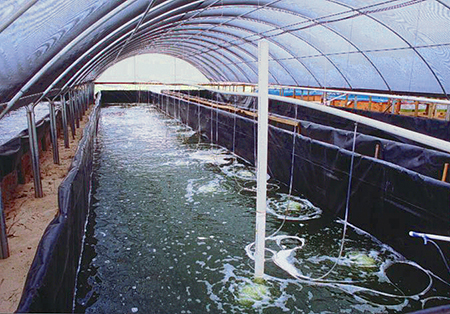
OBF is well located to be free from ocean-borne pathogens, with appropriate water quality, and within a few hours of one of the state’s premier SPF hatcheries, Shrimp Improvement Systems on Plantation Key.
OBF implements many standard biosecurity rules, including required check-in hand washing, shoe baths, and chlorine baths for the limited number of service vehicles that are permitted on-site. No seafood of any sort may be brought onto the farm, and visitors who have been to another farm within 30 days, must wear special disposable jump suits and footwear. All PLs are PCR tested twice for WSSV and other pathogens by the Aquatic Animal Health Laboratory at the Harbor Branch Oceanographic Institution), first when stocked into the nursery phase and then when they are transferred into the growout ponds. Daily procedures include water quality tests and inspection of shrimp samples. Signed health certificates accompany all aquatic animals received at the farm.
Zero water exchange
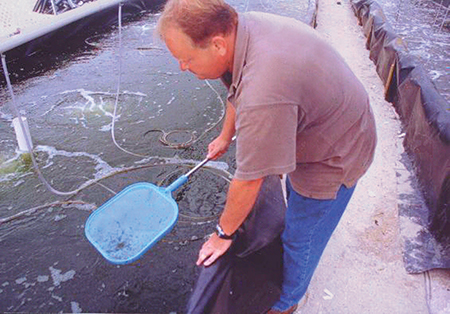
Third among the major protocols at OBF is the development of a zero exchange water management system. Trials are now evaluating recommended diets and stocking densities.
As shown elsewhere, including Belize Aquaculture, Inc., feeds with reduced protein and proper C/N balances are proving to be key. Additional substrate construction and deployment are also being tested, as well as water circulation models best suited to our system.
Preliminary results
Acclimation and nursery phase protocols have been established. Shrimp growth and survival in ponds are all currently within acceptable parameters, and overall production and profit should exceed projections. Other studies are also evaluating the economic viability of shrimp and tilapia.
OBF has taken the first steps to make a zero discharge, inland, shrimp production system in Florida a reality. These systems can reduce nutrient loading of adjacent waters. Heterotrophic culture systems have the potential to reduce protein requirements and move from marine to vegetable protein sources, benefiting the farmer and the environment.
(Editor’s Note: This article was originally published in the October 2001 print edition of the Global Aquaculture Advocate.)
Now that you've reached the end of the article ...
… please consider supporting GSA’s mission to advance responsible seafood practices through education, advocacy and third-party assurances. The Advocate aims to document the evolution of responsible seafood practices and share the expansive knowledge of our vast network of contributors.
By becoming a Global Seafood Alliance member, you’re ensuring that all of the pre-competitive work we do through member benefits, resources and events can continue. Individual membership costs just $50 a year.
Not a GSA member? Join us.
Authors
-
David Z. McMahon
Nova Southeastern University Oceanographic Center
8000 North Ocean Drive
Dania, Florida 33004 USA[109,111,99,46,111,111,104,97,121,64,56,57,121,111,98,110,97,101,99,111]
-
Bart Baca, Ph.D.
Nova Southeastern University Oceanographic Center
8000 North Ocean Drive
Dania, Florida 33004 USA[109,111,99,46,111,111,104,97,121,64,56,57,121,111,98,110,97,101,99,111]
-
Tzachi M. Samocha, Ph.D.
Texas Agricultural Experiment Station
Shrimp Mariculture Research Facility
Corpus Christi, Texas, USA
Tagged With
Related Posts
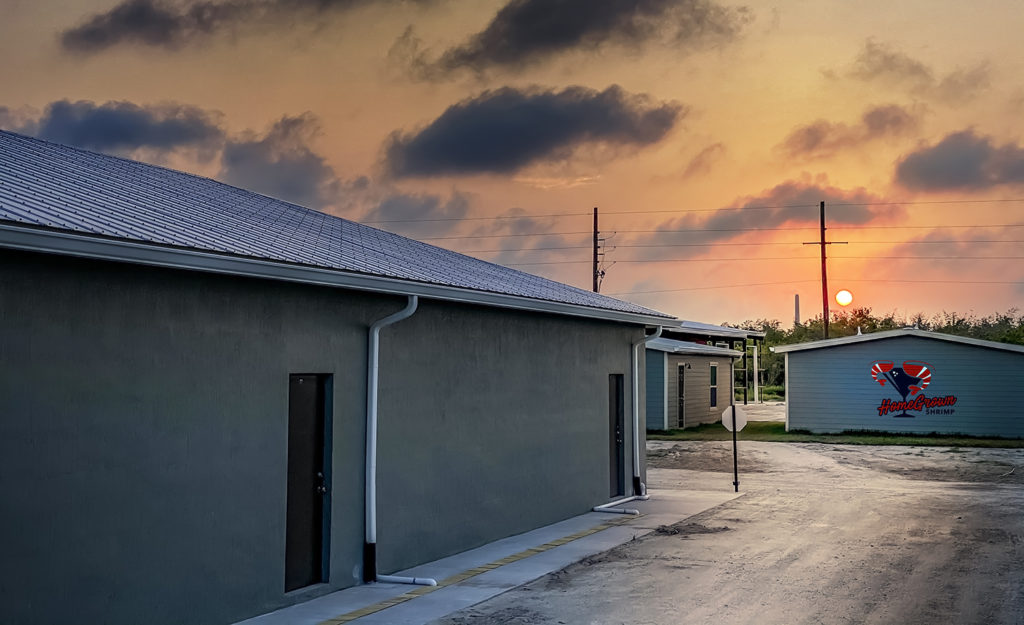
Innovation & Investment
Robins McIntosh: Florida RAS shrimp farm the first of many
CP Foods’ Robins McIntosh is turning a 40-acre site in Florida into a next-generation shrimp farm, producing 1,000 tons annually with zero waste.
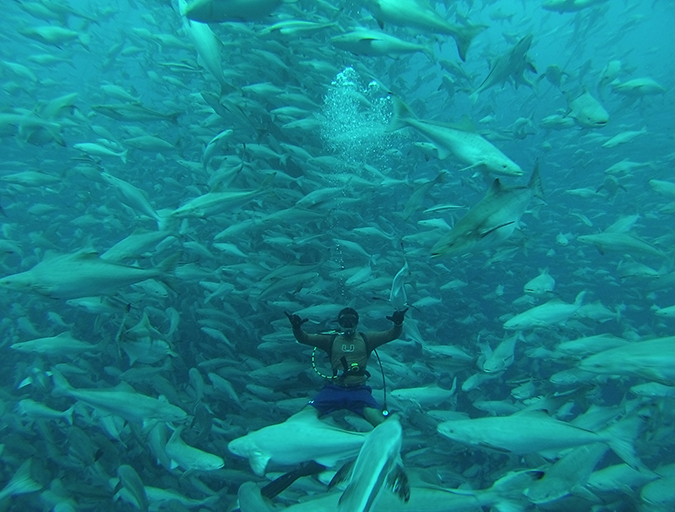
Innovation & Investment
Aquaculture Exchange: Daniel Benetti
University of Miami professor says the U.S. seafood marketplace needs to embrace 'plate-sized' fish if a domestic aquaculture industry is to become sustainable and profitable.
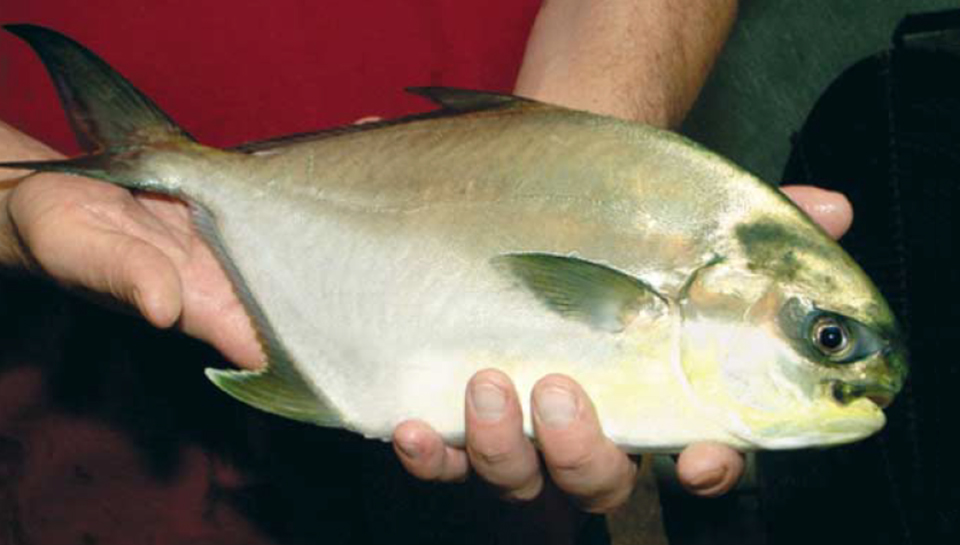
Health & Welfare
Captive reproduction, larviculture of Florida pompano
U.S. trials indicated wild-caught pampano could be feed trained and spawned in captivity via hormonal induction. Observations of fecundity, egg fertilization rates, and spawning frequency suggested that quantities of pompano seedstock could be produced over time. Although survival during test larviculture was low, the trials showed pompano larvae can be reared following standard commercial practices.
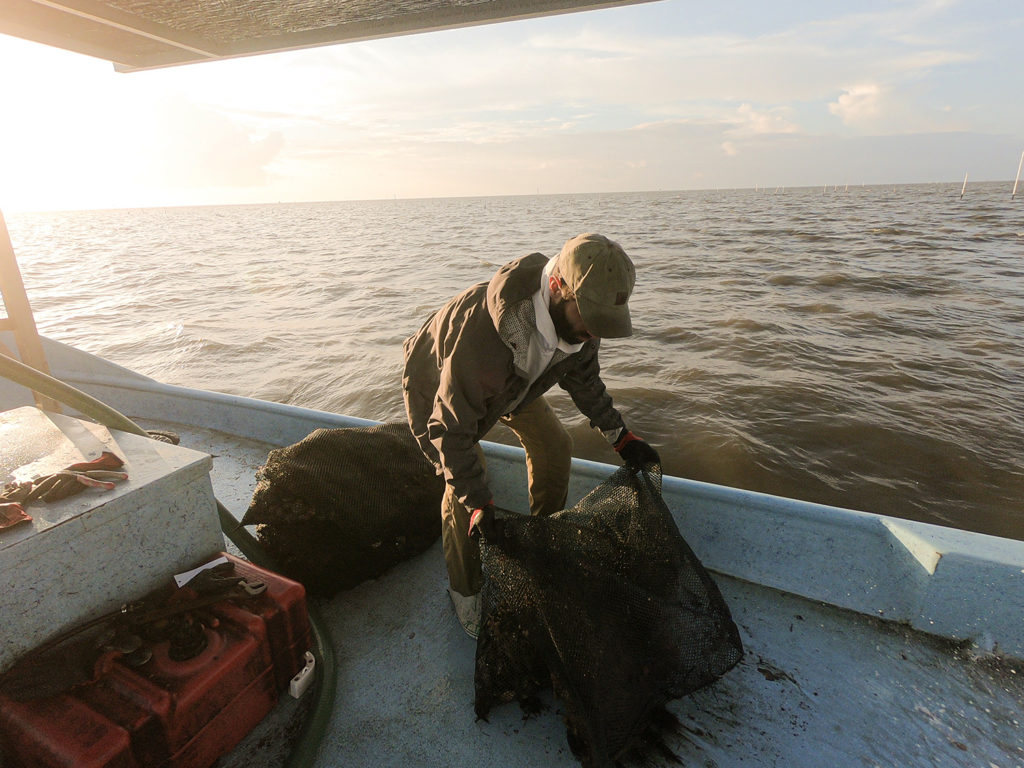
Intelligence
Farmers trade Kansas cornfields for Florida clam beds
The Stones came to Florida without experience in clams and no ties to the fishing community. Their backgrounds in farming, however, are proving valuable.


